GDP components that need a visit
By Anjum Ibrahim
Pakistani administration after administration has implemented almost identical policies to incentivize two productive sectors - industry and agriculture through supportive monetary policy (cheap credit to target groups and/or intervention in the foreign exchange market), and fiscal policy (low taxes and in some instances for example sugar, rebate on exports, with sustained heavy reliance on indirect taxes as a revenue source, and cheaper utilities relative to the rest of the public).
Cheap credit is not only used as a policy to promote output but also as a policy to encourage the less advantaged to launch micro or medium-sized businesses. The title of any such scheme, as is the norm in Pakistani politics, changes with the advent of each new administration: the People’s Party favours a title with the name of its assassinated leader or includes the word ‘People’, Nawaz Sharif was partial to titles starting with Prime Minister while Imran Khan favours the use of Urdu titles including Ehsaas programme, Kamyab programme (whose success has yet to be determined especially as its funding has reportedly been slashed).
One difference apparent during the Khan administration from his predecessors has been a discount rate that is well above the regional average (even today with the rate at 7.5 percent – down from the 13.25 percent July 2019-March 2020). This has implied that the government borrows at a rate well above those available to the productive sectors through issuance of Pakistan Investment Bonds – a factor that explains why the banking sector has to be coerced into lending to the programmes cited above.
Be that as it may, it is relevant to note that Dr Hafeez Sheikh during his second stint as the de facto finance minister (April 2019 to end March 2021) reportedly acknowledged the need for a study that would determine the actual impact, if any, of these monetary and fiscal incentives on the select productive sectors in particular and the economy in general. That study remains pending and one would hope that it is undertaken while focusing on the major Gross Domestic Product (GDP) components.
In 2020-21 (constant basic prices of 2005-06) the services sector accounted for 8,041,169 million rupees (provisional figures) against 4,995,212 million rupees from commodity producing sectors (agriculture and industry); in addition, the services sector has been rising at a pace much greater than the rise in commodity producing sectors except in 2019-20 (the pandemic dip) – from 5,971,163 million rupees in 2013-14 to 7,459,758 million rupees in 2017-18 to 7,742,479 million rupees in 2018-19 to 7,699,891 million rupees in 2019-20. In marked contrast commodity producing sectors registered 4,245,893 million rupees in 2013-14, rose to 4,884,508 million rupees in 2017-18, to 4,841,943 million rupees in 2019-20 and to 4,995,212 million rupees in 2020-21.
Three observations are critical. First, the focus of government largesse has remained on crops in spite of the fact that not only is total contribution of agriculture to GDP declining (estimated at 19.19 percent in 2020-21) but, perhaps more relevantly from a policy perspective, the largest contributor to agriculture is not crops but livestock at 11.53 percent with important crops at 6.87 percent and other crops at 4.32 percent.
Second, industrial sector accounted for 19.2 percent of GDP, with the largest contribution by large scale manufacturing sector at 9.73 percent while construction, the Prime Minister’s favoured sub-sector for promotion, registering 2.61 percent of GDP (last year’s provisional figures – a percentage that has remained more or less constant since 2013-14 when it contributed 2.34 percent to GDP).
The fastest rising sector is the services sector contributing 61.68 percent to GDP in the provisional estimates of 2020-21 with wholesale and retail trade accounting for nearly 19 percent. Agriculture’s contribution (commodity producing sector) was higher than the contribution of wholesale and retail but is inching closer to a parity with the 2020-21 figure showing the former at 2,502,181 million rupees and the latter at 2,453,199 million rupees (compared to 2,434,850 million rupees agriculture and 2,263,668 million rupees wholesale and retail trade in 2019-20). And equally relevant for policy decisions is the fact that a parity of sorts has been achieved between industrial sector and wholesale/retail trade last year at 2,493,031 million rupees and 2,453,199 million rupees respectively whereas in 2013-14 the industrial sector’s contribution was 2,089,776 million rupees and that of wholesale/retail trade was lower at 1,894,410 million rupees.
Within the services sector after wholesale/retail trade in descending order of contribution were transport storage and communications at 1,588,101 million rupees, other private services at 1,534,215 million rupees and general government services at 1,070,833.
And this is where the conundrum lies as it is wholesale and retail trade – be it for farm sector products (aarthis held accountable for high prices) or be it domestic/imported industrial output – accused of operating on windfall profits, as per frequent statements by Prime Minister Imran Khan and his de facto Finance Minister Shaukat Tarin. The aarthis operating in the farm sector with generational links to the poor farmers have been raising prices as and when the prices of petroleum and products rise (though the reverse does not apply when petroleum prices decline) and are prone to creating artificial shortages to generate windfall profits for themselves. Tarin’s solution is to break the hold of the aarthis on the poor farmers through extending cheap/free credit – a policy proposal that if successful may loosen the hold of the aarthis. Be that as it may, Pakistani governments, since the 1970s have extended subsidized or free credit to the poor farmers’ which was either hijacked by the rich farmers or the scheme was too ambitious with banks reluctant to meet the ambitious target set by the government (100 billion rupees were to be disbursed to 600,000 farmers in Punjab in 2016) given the lack of collateral of subsistence level farmers and the attraction of procuring safe government paper by banks at much higher returns.
Rich farmers are obviously not clients of the aarthis and their financial health enables them to use advanced farm equipment and better quality inputs to generate a yield per hectare well above the national average. However, representation of rich absentee landlords in the country’s national and provincial assemblies, coupled with the constitutional provision making agriculture a provincial subject, has been cited as reasons why they pay much lower taxes than what is payable by the salaried – those employed in the private or public sector, or their counterparts in industry. No civilian set-up or military dictator has had the temerity to change the constitutional provisions relating to the tax concessions enjoyed by the rich landlords.
So what kind of reforms can be supported? In the middle-ages land reform focused on land redistribution (Z A Bhutto era) however in recent decades agricultural reform has focused on improvement in the agrarian structure that includes land tenure, farm organization, scale of operation, tenancy terms and rural credit, marketing and education. To-date the focus of our governments, including the incumbent’s, is on rural credit to the poor with no focus on marketing or education or indeed on farm organization which could benefit from setting up cooperatives and/or corporatization of several subsistence level farmers. The PTI forms a government in the centre and two provinces and one would hope that these two provinces impose a tax on farm income commensurate to the rate payable by the salaried class and collected by the Federal Board of Revenue.
Mollycoddling of industry in general and exporters in particular needs to be evaluated and incentives targeted towards known results.
To conclude, unlike previous administrations the incumbent government set up more than 40 task forces for each sub-sector and sadly details of their recommendations were neither shared with the public nor have become policy. That needs to change and linkage between policy (credit/taxes/cheaper utilities) and the contribution of any subsector to the GDP strengthened.
This article was first published in Business Recorder on Nov 15, 2021
For the latest news, follow us on Twitter @Aaj_Urdu. We are also on Facebook, Instagram and YouTube.




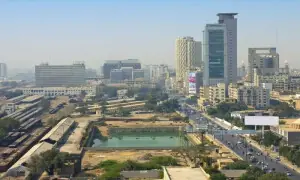




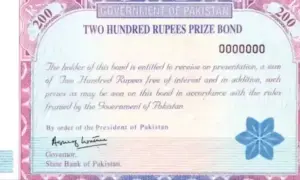
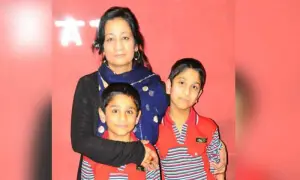
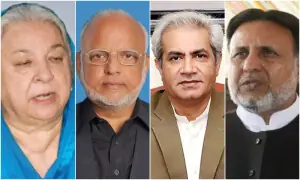


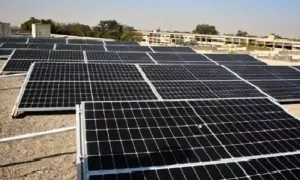


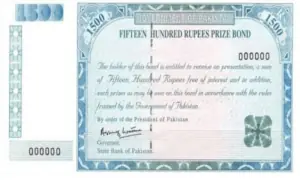


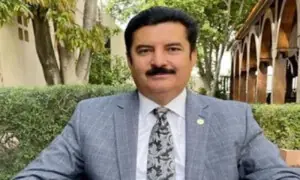
Comments are closed on this story.